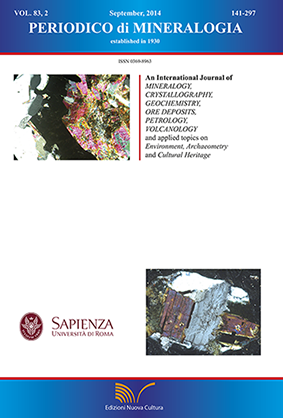Geochemistry of the Late Mesozoic - Early Cenozoic turbidites from the NE part of the Adria Plate
DOI:
https://doi.org/10.2451/2014PM0008Keywords:
geochemistry, flysch, SE Alps, Outer Dinarides, Late Cretaceous, EoceneAbstract
Cretaceous to Eocene sandstones from the Southeastern Alps and Outer Dinarides (Italy, Slovenia and Croatia) have been geochemically determined to detect their provenance. The first arenaceous strata of the Julian Basin are strongly chemically influenced by the disgregation of metamorphic and not-metamorphic rock types related to the ancient Vardar sea closure where Island Arc and MORB-like related rock types were generated. At about 56 Ma, one level testifies the strong involvement of continental upper crustal source rocks as a consequence of the rapid arising of the Dinarides. Such contribution is well evidenced also in the Claut basin strata. After this first stage, a new moment of upwelling involved the Julian sediments which contributed, with recycled materials, to the creation of Brkini (and Vipava) basins. Moreover, other protolith rock types, which will represent the main source of the Istrian Basin, begin to be significant.


